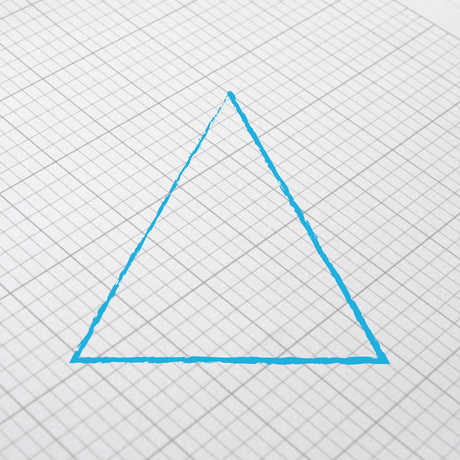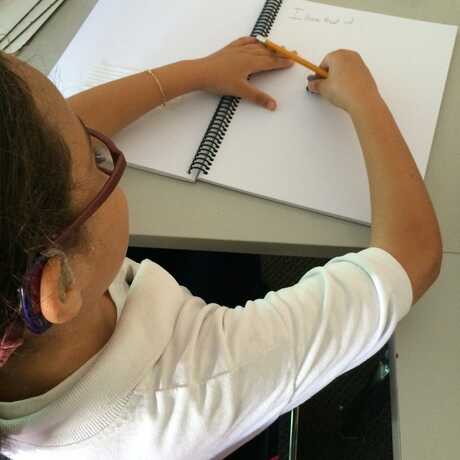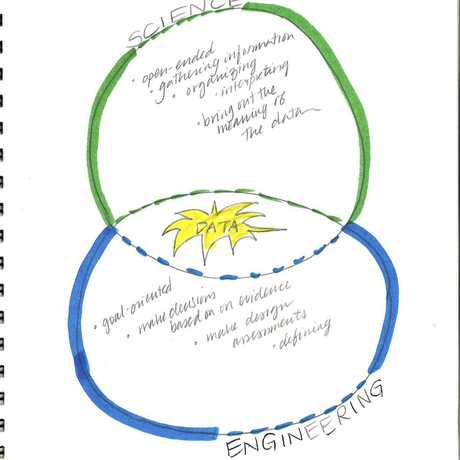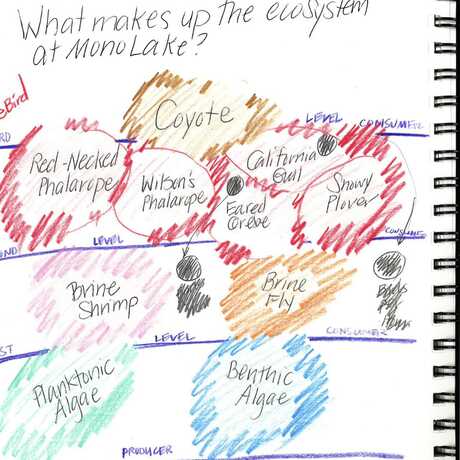

When and why should you brainstorm with your students? Learn how word clouds, lists, and concept maps will get your students thinking before an investigation. Discover strategies that surface prior knowledge and make the activity relevant to each student.
About This Guide

Below, you’ll find guidance related to using the science notebook to brainstorm, including:
- Brainstorming to solicit students’ prior knowledge
- Brainstorming to connect science content to students’ lives
- Brainstorming as a pre-step before designing an engineering solution
Because we know teachers appreciate seeing the results of using these strategies, we've also created an example gallery containing student work.
When and Why to Brainstorm

- Brainstorm to solicit students’ prior knowledge. This kind of brainstorming helps get students thinking about science they already know. Brainstorming in this way gets lots of student ideas onto the page; it also allows students think time before jumping into a science activity.
- Brainstorm to connect to students’ lives. Encourage students to relate the science they are learning in class to phenomena they have experienced in their lives. For instance: How do you use electricity in your house? What can your teeth do? What changes in the weather have you noticed lately?
- Brainstorm as a pre-step before planning an investigation or designing an engineering solution. Brainstorming in this way helps get students’ ideas out in the open before they begin playing with materials. For a science investigation, students might write a quick and messy plan for their experiment and data collection. For an engineering challenge, students could make rough sketches or plans for their design.
How to Brainstorm in the Notebook
There is not one right way to collect student brainstorms. As long as there is class time for it and space dedicated in the notebooks, all kinds of brainstorms can be valuable. They can be done in words or images or both. Brainstorms can be organized or messy depending on your personal preferences and goals for your students. Below are a few possibilities for student brainstorms:
Word Clouds

Simply have students write terms they know, or think, are associated with the science they are learning. Word clouds are purposefully messy and sprawling to allow for a multitude of ideas and connections at the beginning of a unit. After students make word clouds in their own notebooks, they can contribute to a whole-class word cloud on the board or on a big poster.
Lists

If you prefer a more organized approach, then use a list for brainstorming. Lists enable students to collect all their ideas in one place that can be returned to easily throughout the science unit. Lists with multiple columns can help students see connections like cause and effect relationships.
Concept Maps

A concept map begins with a main idea, typically placed in a circle, and then has lines connecting the main idea to other ideas. This strategy helps students visualize relationships among different concepts. Reviewing their concept maps will give you a sense of students' understanding, how their ideas are connected, and any gaps or misconceptions they may have.
How To Make It Happen
- Leave class time at the beginning of a unit for student thinking and writing.
- Give students time to share with each other and the class.
- Returning to class brainstorms in the middle or end of a unit can help students see how much they have learned.
- A brainstorm can be used as a pre-assessment of what students already know about a topic. You can ask questions like…What do you already know? Where have you seen? What does this remind you of?
Notes from the Classroom

Scott was excited to do more engineering with his 3rd graders. He found that his students were engaged in the engineering challenges he gave them at first, but over time, the groups became unfocused and frustrated that their designs did not work.
Scott realized some brainstorming time at the beginning might help teams explore several ideas and commit to one. He gave his students some time at the beginning of each lesson to write a plan (or a revision of their previous plan) and make a quick sketch of what they were going to build.
This small brainstorming window enabled his students to share ideas and unite around a common plan. The plans also served as a tool Scott could use to get groups back on track when they got stuck.

Science Notebook Corner
Learn how notebooks can help your students think and act like scientists.


